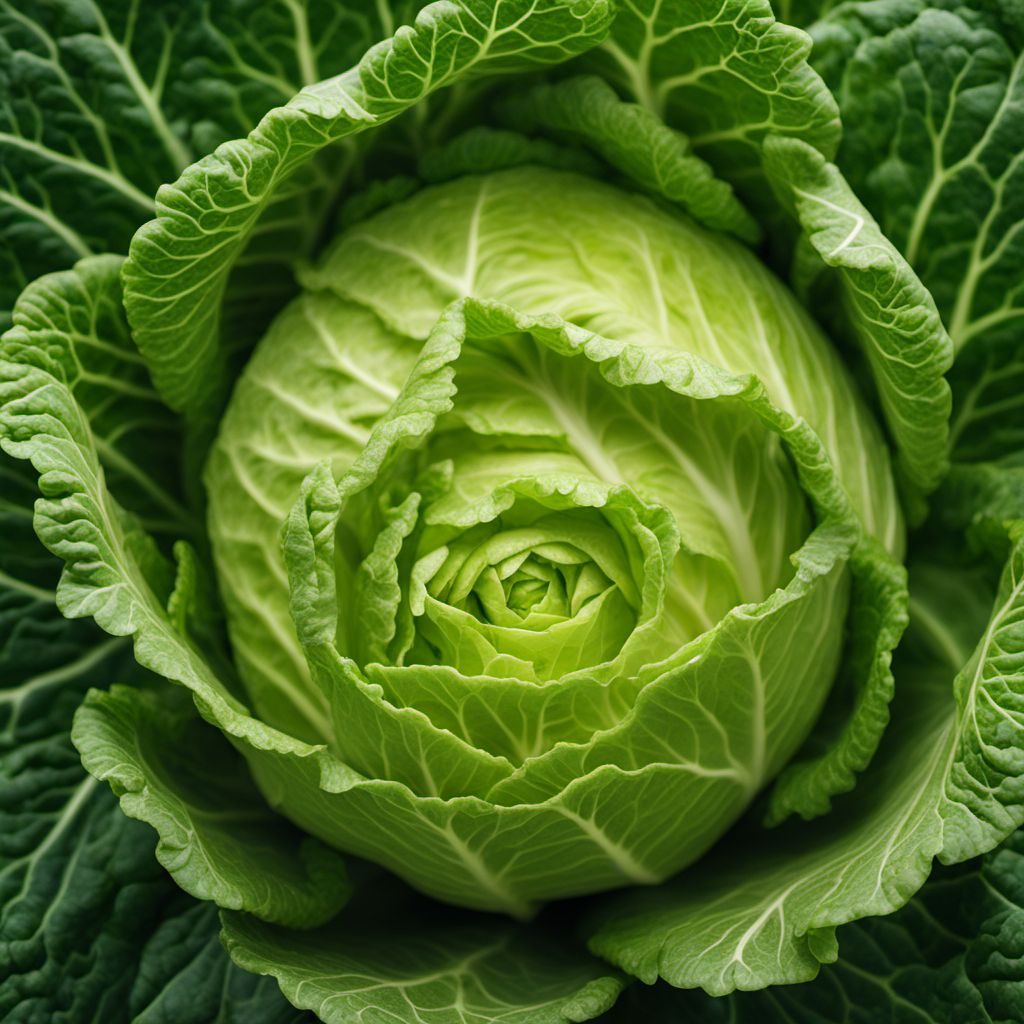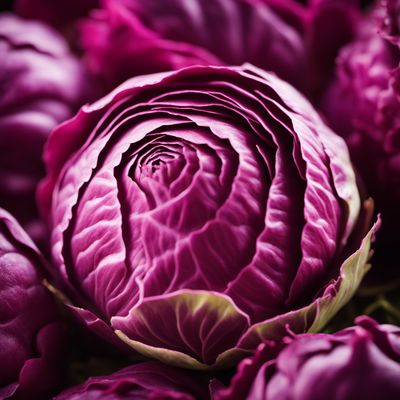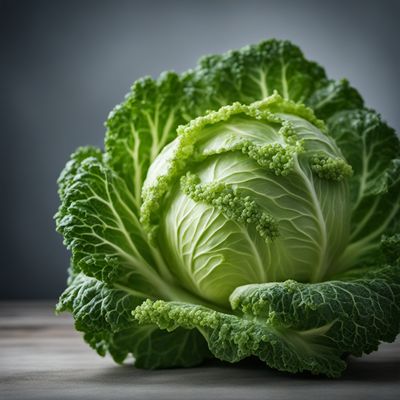
Ingredient
Savoy cabbages
The Ruffled Gem: Savoy Cabbages
Savoy cabbage is a variety of cabbage with crinkled, ruffled leaves that range in color from pale green to dark green. It has a mild and slightly sweet flavor, with a tender yet crisp texture. The leaves are more delicate compared to other cabbage varieties, making it suitable for raw applications like salads or slaws. When cooked, Savoy cabbage retains its texture and imparts a subtle sweetness to dishes. It can be steamed, sautéed, braised, or used as a wrapper for stuffed cabbage rolls.
Origins and history
Savoy cabbage originated in Italy and is named after the Savoy region. It has been cultivated for centuries and is a staple in European cuisines, particularly in Italy, France, and Germany. Its unique appearance and flavor have made it a favorite among chefs and home cooks alike. Today, it is grown in various regions around the world and is readily available in most grocery stores and farmers markets.
Nutritional information
Savoy cabbage is low in calories and a good source of dietary fiber, vitamins C and K, and folate. It also contains antioxidants and phytonutrients that contribute to overall health and well-being. Its high water content makes it hydrating and refreshing.
Allergens
Savoy cabbage does not commonly cause allergies. However, individuals with a known allergy to cabbage or other cruciferous vegetables should exercise caution and consult with a healthcare professional if necessary.
How to select
When selecting Savoy cabbage, look for heads that are firm and heavy for their size. The leaves should be crisp and vibrant, without any wilting or discoloration. Avoid cabbages with damaged or yellowing leaves. The outer leaves can be slightly loose, but the head should feel compact when gently squeezed. Opt for organic or locally grown varieties if available.
Storage recommendations
To keep Savoy cabbage fresh, remove any damaged or wilted outer leaves and store it in a perforated plastic bag in the refrigerator's crisper drawer. It can stay fresh for up to a week. Avoid washing the cabbage until ready to use, as excess moisture can promote spoilage. If only using a portion of the cabbage, tightly wrap the remaining head in plastic wrap or place it in an airtight container to prevent moisture loss.
How to produce
Savoy cabbage can be grown in home gardens or containers with proper care. It requires well-drained soil, full sun exposure, and regular watering. Sow the seeds directly in the garden or start them indoors and transplant the seedlings once they are established. Harvest the heads when they reach the desired size by cutting them at the base of the plant.
Preparation tips
Savoy cabbage can be used in a variety of dishes, both raw and cooked. Its tender leaves are perfect for salads, slaws, and wraps. When cooked, it adds texture and flavor to soups, stews, stir-fries, and side dishes. Savoy cabbage leaves can also be used as a wrapper for stuffed cabbage rolls or as a substitute for tortillas in low-carb wraps. To retain its crispness, avoid overcooking and opt for quick cooking methods like stir-frying or steaming.
Substitutions
Green cabbage or Napa cabbage can be used as substitutes for Savoy cabbage in most recipes. However, keep in mind that the texture and flavor may differ slightly. If using as a wrapper, blanched collard greens or Swiss chard leaves can be used as alternatives.
Culinary uses
Savoy cabbage is commonly used in European cuisines, particularly in dishes like coleslaw, sauerkraut, cabbage rolls, and hearty soups. It is also a popular choice for stir-fries, braised dishes, and stuffed cabbage recipes. In Asian cuisines, it is often used in kimchi and hot pot dishes. Its versatility allows it to be incorporated into various cuisines and dishes around the world.
Availability
Savoy cabbage is commonly available in most grocery stores, supermarkets, and farmers markets. It is cultivated in regions with temperate climates, including Europe, North America, and parts of Asia. Local availability may vary depending on the season and location.



